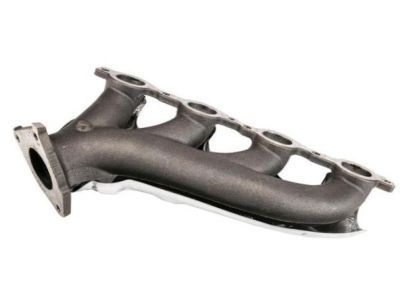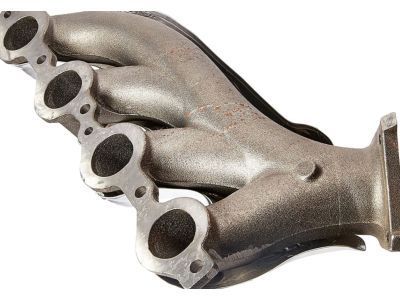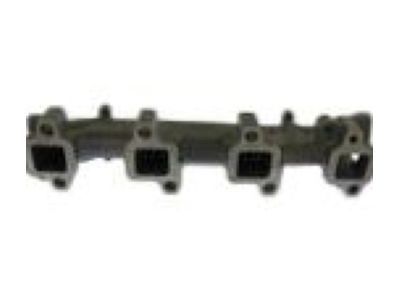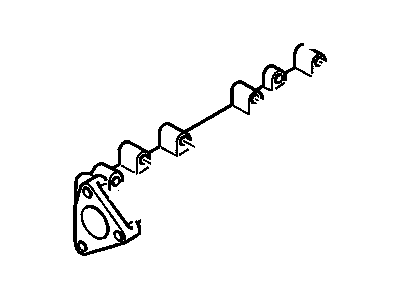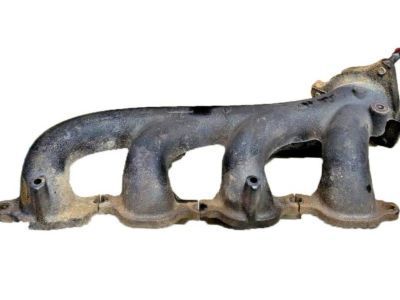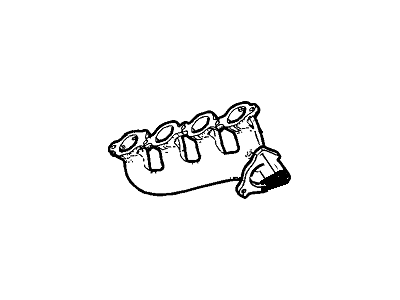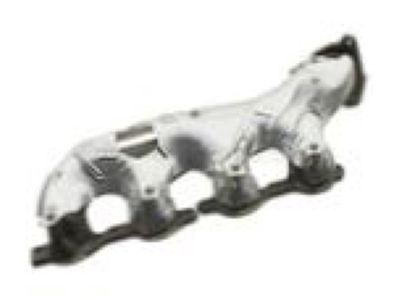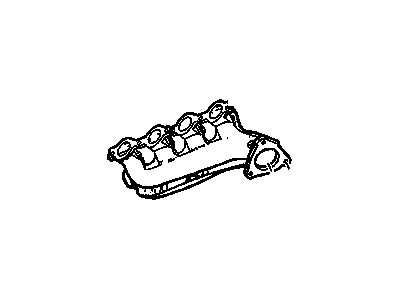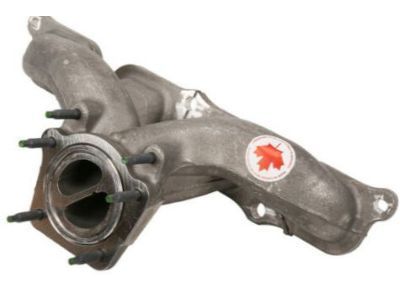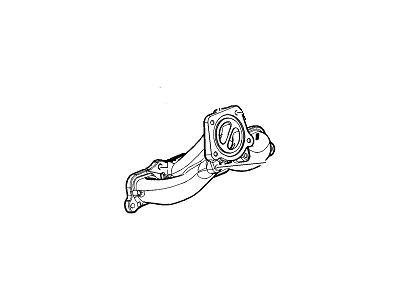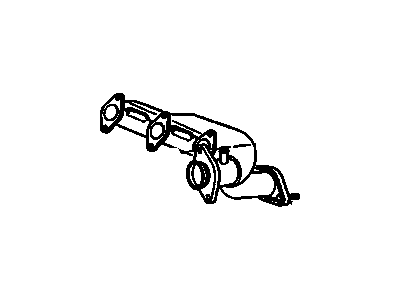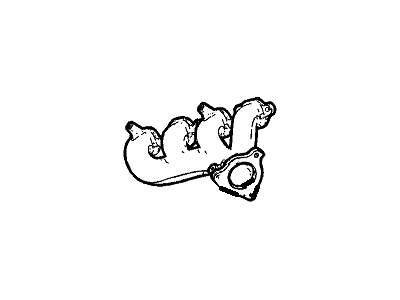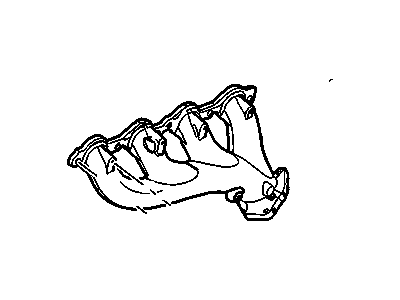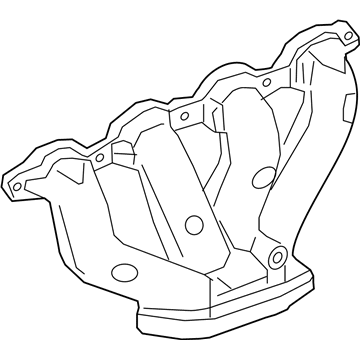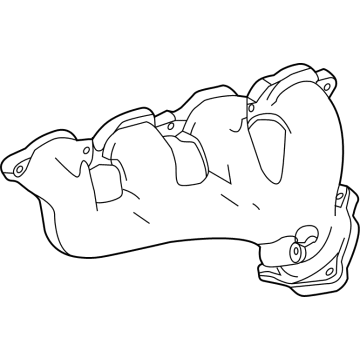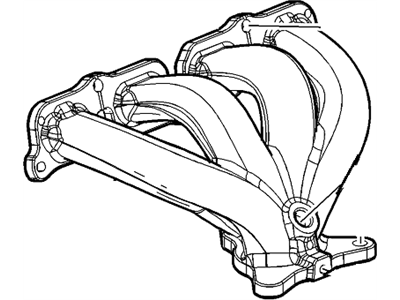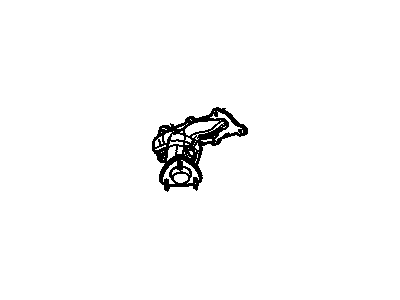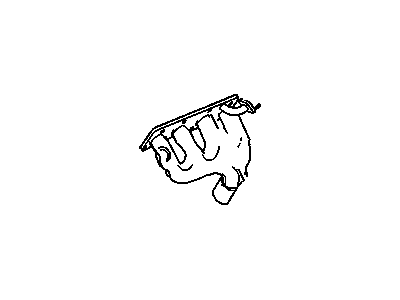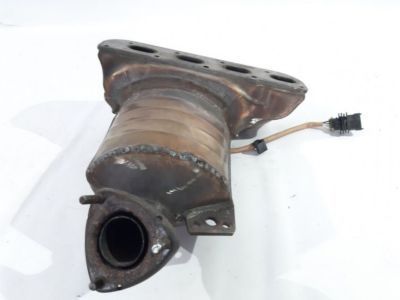
My Garage
My Account
Cart
Genuine Cadillac Exhaust Manifold
Engine Exhaust Manifold- Select Vehicle by Model
- Select Vehicle by VIN
Select Vehicle by Model
orMake
Model
Year
Select Vehicle by VIN
For the most accurate results, select vehicle by your VIN (Vehicle Identification Number).
91 Exhaust Manifolds found
- Product Specifications
- Other Name: Manifold,Exhaust ; Manifold, Engine Exhaust Manifold; Exhaust Manifold, Manifold
- Replaces: 12602037, 12562235, 12571678, 12564155
- Product Specifications
- Other Name: Manifold, Exhaust ; Manifold, Engine Exhaust Manifold; Exhaust Manifold
- Replaces: 97224586
- Product Specifications
- Other Name: Manifold, Exhaust; Manifold
Cadillac Engine Exhaust Manifold
Part Number: 12616286$205.82 MSRP: $351.92You Save: $146.10 (42%)Ships in 1-2 Business DaysProduct Specifications- Other Name: Manifold,Exhaust; Exhaust Manifold
- Replaces: 12602038, 12578341
Cadillac Exhaust Manifold Assembly
Part Number: 12670220$309.40 MSRP: $529.04You Save: $219.64 (42%)Ships in 1-2 Business DaysProduct Specifications- Other Name: Manifold Assembly, Exhaust; Exhaust Manifold
- Replaces: 12627069
Cadillac Manifold
Part Number: 14091886$176.38 MSRP: $251.30You Save: $74.92 (30%)Ships in 1-2 Business DaysProduct Specifications- Other Name: Exhaust Manifold
Cadillac Exhaust Manifold
Part Number: 12629337$156.98 MSRP: $268.42You Save: $111.44 (42%)Ships in 1-2 Business DaysProduct Specifications- Other Name: Manifold, Exhaust; Manifold
Cadillac Exhaust Manifold Assembly
Part Number: 12677665$227.59 MSRP: $362.98You Save: $135.39 (38%)Ships in 1-2 Business DaysProduct Specifications- Other Name: Manifold Assembly, Exhaust; Exhaust Manifold, Manifold
- Replaces: 12648339
Cadillac Exhaust Manifold
Part Number: 12629729$384.19 MSRP: $612.74You Save: $228.55 (38%)Ships in 1-3 Business DaysProduct Specifications- Other Name: Manifold, Exhaust
Cadillac Engine Exhaust Manifold
Part Number: 12611324$195.40 MSRP: $311.65You Save: $116.25 (38%)Ships in 1-3 Business DaysProduct Specifications- Other Name: Manifold, Exhaust ; Manifold, Engine Exhaust Manifold; Exhaust Manifold, Manifold
- Replaces: 12578029
- Product Specifications
- Other Name: Exhaust Manifold
- Replaced by: 12701712
Cadillac Manifold Assembly, Exh
Part Number: 55513001$117.36 MSRP: $176.03You Save: $58.67 (34%)Ships in 1-3 Business DaysProduct Specifications- Other Name: Exhaust Manifold
- Replaced by: 40009493
Cadillac Engine Exhaust Manifold
Part Number: 12611322$199.85 MSRP: $311.63You Save: $111.78 (36%)Ships in 1-2 Business DaysProduct Specifications- Other Name: Manifold, Exhaust ; Manifold, Engine Exhaust Manifold; Exhaust Manifold, Manifold
- Replaces: 12578030
- Product Specifications
- Other Name: Manifold, Exhaust
Cadillac Exhaust Manifold
Part Number: 12627186$131.75 MSRP: $210.13You Save: $78.38 (38%)Ships in 1-3 Business DaysProduct Specifications- Other Name: Manifold, Exhaust
Cadillac MANIFOLD-EXH
Part Number: 12713621$236.28 MSRP: $376.77You Save: $140.49 (38%)Ships in 1-3 Business DaysProduct Specifications- Other Name: Exhaust Manifold
Cadillac Manifold, Exh
Part Number: 12701715$260.19 MSRP: $394.23You Save: $134.04 (34%)Ships in 1-3 Business DaysProduct Specifications- Other Name: Exhaust Manifold
- Replaces: 12690202
Cadillac Engine Exhaust Manifold Assembly
Part Number: 24412093$26.27 MSRP: $390.88You Save: $364.61 (94%)Ships in 1-2 Business DaysProduct Specifications- Other Name: Manifold Assembly, Exhaust ; Manifold, Engine Exhaust Manifold; Converter, Exhaust Manifold, Manifold
Cadillac Engine Exhaust Manifold Assembly
Part Number: 12564185$28.32 MSRP: $421.39You Save: $393.07 (94%)Ships in 1-2 Business DaysProduct Specifications- Other Name: Manifold Assembly, Exhaust ; Manifold, Engine Exhaust Manifold; Exhaust Manifold, Manifold
Cadillac Exhaust Manifold Assembly (W/ 3Way Catalytic Converter)
Part Number: 55582598$2255.78 MSRP: $3389.71You Save: $1133.93 (34%)Product Specifications- Other Name: Manifold Assembly, Exhaust (W/ 3Way Catalytic Converter); Exhaust Manifold
| Page 1 of 5 |Next >
1-20 of 91 Results
Cadillac Exhaust Manifold
For superior quality and affordable Cadillac Exhaust Manifolds, consider our website. We proudly present a wide selection of genuine Cadillac Exhaust Manifolds at unbeatable prices. These OEM parts, supported by the manufacturer's warranty, are also eligible for our hassle-free return policy and swift delivery service.
Cadillac Exhaust Manifold Parts Questions & Experts Answers
- Q: How to remove and install an exhaust manifold in 5.7L,6.0L,6.2L V8 engine on Cadillac CTS?A:To remove the exhaust manifold, first one needs to disconnect the cable from the negative terminal of the battery, then by putting a jack and putting some stands the vehicle has to be lifted from the ground. Treat the exhaust pipe to manifold studs and nuts with penetrating oil, and, if equipped, pull the connector off the oxygen sensor. Lose the nuts which holds the exhaust pipe(s) to the manifold(s) and the engine top front cover bolts as well as the rear cover nuts. Take out the spark plug wires and spark plugs of the side where the work is being done or of both if both manifolds have to be removed. For the right side manifold release the connected pipe for the oil dipstick while for the left side release the steering shaft connected to the steering gear. Subsequently, it is required unlatch the mounting bolts to relieve the exhaust manifold and cylinder head connection, and the heat shields. During installation you need to inspect the manifold for cracks and the bolt threads for cleanliness. The surfaces where the gasket sits, that is the mating surface of the manifold and cylinder head must be clean, and use a gasket scraper to remove carbon deposits and gasket material without damaging the aluminum. Place the heat shields, bolts and gaskets on the manifold with the help of retaining tabs, that holds the assembly together. Place an epoxy adhesive with medium strength from the fourth thread of the bolts on the nut threads, then fit the manifold onto the cylinder head then tighten the mounting bolts only to finger tightness. In two runs, using a torque wrench, start tightening the bolts from the middle to the outside and if need arises, flatten the exposed of the exhaust manifold gasket against the cylinder head. Perform the process of installation in an order inverse to the process of removal and finally, turn on the engine and check the exhaust.
- Q: How to remove and install an exhaust manifold in V6 engine on Cadillac Escalade?A:To remove the exhaust manifold, first disconnect the cable from the negative terminal of the battery. Raise the vehicle and support it securely on jackstands. If removing the left side manifold, mark the alignment of the upper section of the steering intermediate shaft to the lower part of the steering column, then remove the fasteners and separate the shafts to move them aside. Avoid moving the wheels or steering wheel after disconnecting the shafts to prevent damage to the airbag system clock spring. Apply penetrating oil to the exhaust pipe-to-manifold studs and nuts, then remove the nuts retaining the exhaust pipe(s) to the manifold(s), accessing them from underneath the vehicle or through the fenderwell opening if necessary. Disconnect the spark plug wires and remove the exhaust manifold fasteners, then take out the manifolds along with the heat shields, discarding the gaskets. For installation, check the manifold for cracks and ensure the bolt threads are clean and undamaged. Clean the mating surfaces of the manifold and cylinder head, then position the manifold on a bench and install the heat shields, bolts, and gaskets. Place the manifold on the cylinder head and install the mounting bolts finger tight. When tightening the bolts, work from the center to the ends using a torque wrench, tightening in two steps to the specified torque, and if applicable, bend the locking tabs back against the bolt heads. The remainder of the installation follows the reverse order of removal. Finally, start the engine and check for exhaust leaks.
Related Cadillac Parts
Browse by Model
ATS Exhaust Manifold Allante Exhaust Manifold Brougham Exhaust Manifold CT5 Exhaust Manifold CT6 Exhaust Manifold CTS Exhaust Manifold Catera Exhaust Manifold Cimarron Exhaust Manifold Commercial Chassis Exhaust Manifold DTS Exhaust Manifold Deville Exhaust Manifold ELR Exhaust Manifold Eldorado Exhaust Manifold Escalade Exhaust Manifold Fleetwood Exhaust Manifold SRX Exhaust Manifold STS Exhaust Manifold Seville Exhaust Manifold XLR Exhaust Manifold


